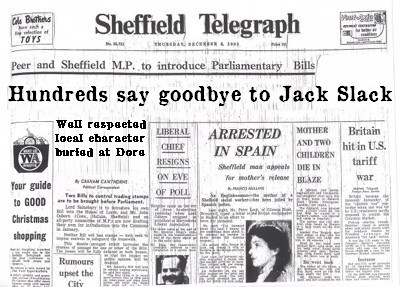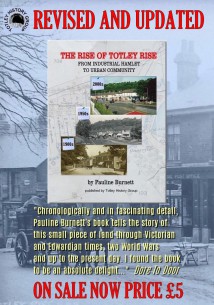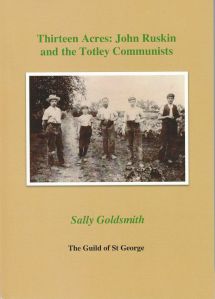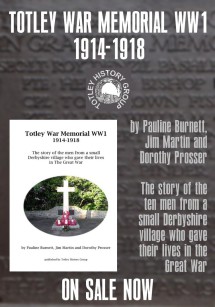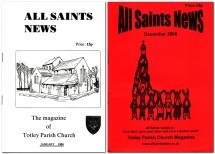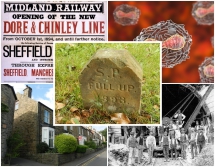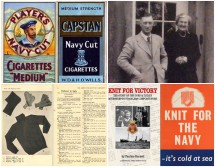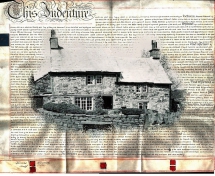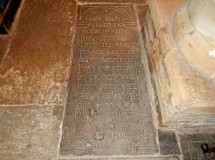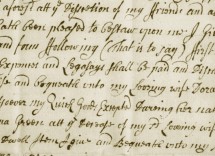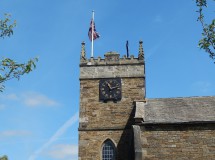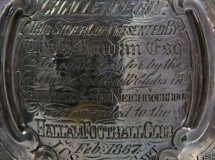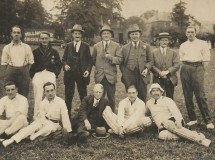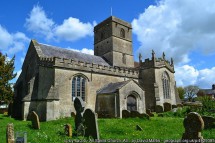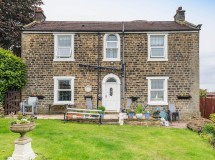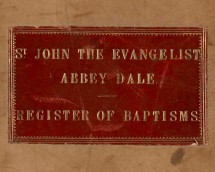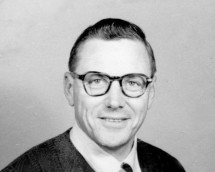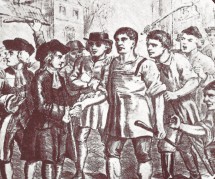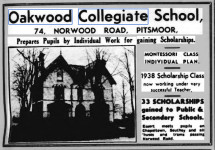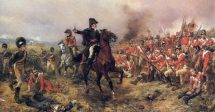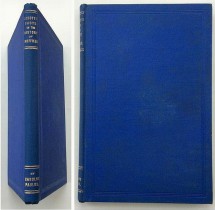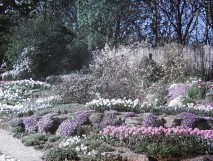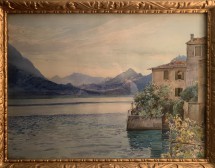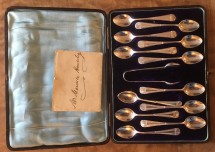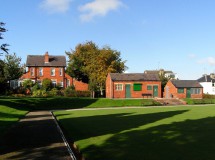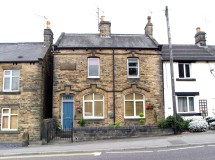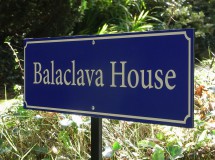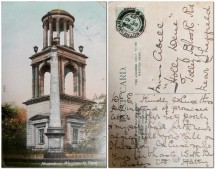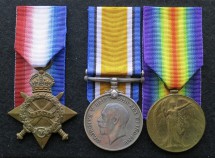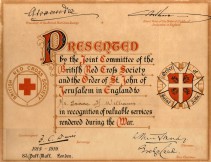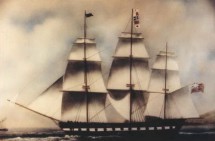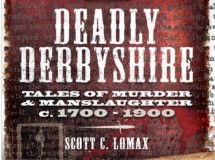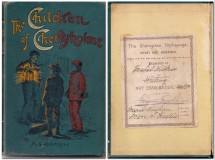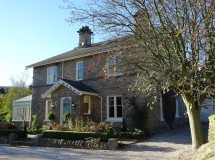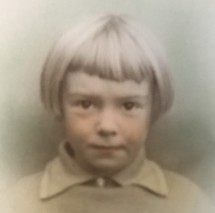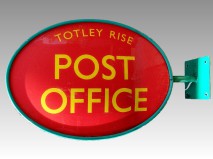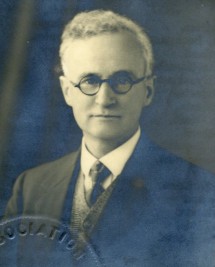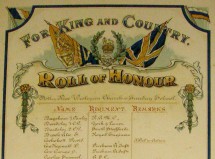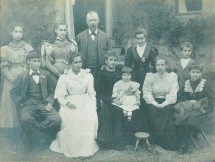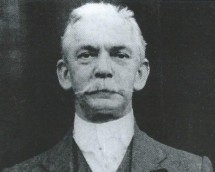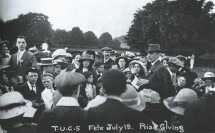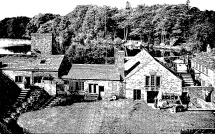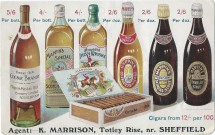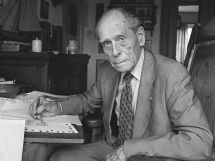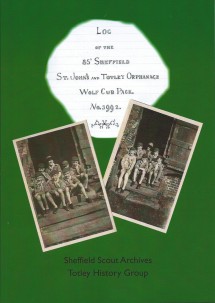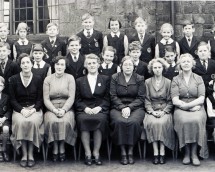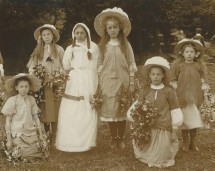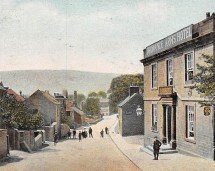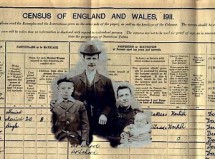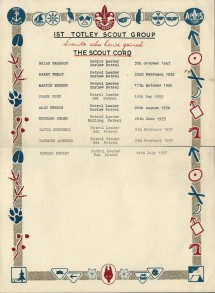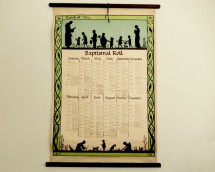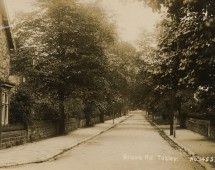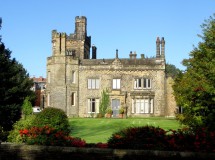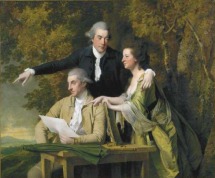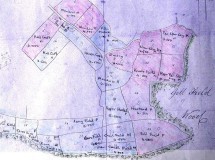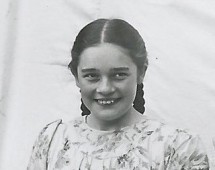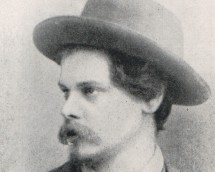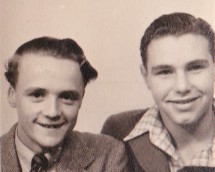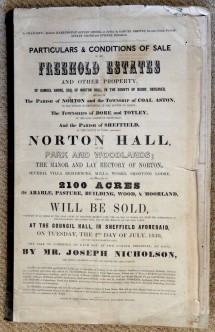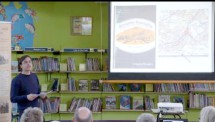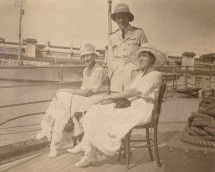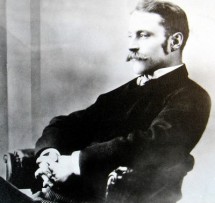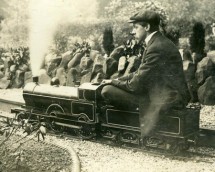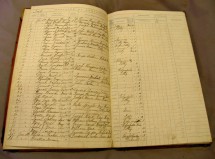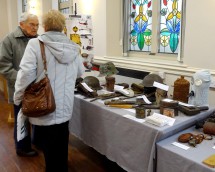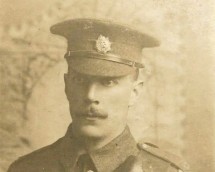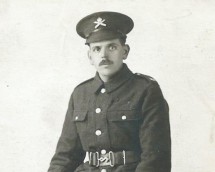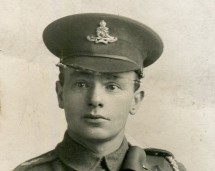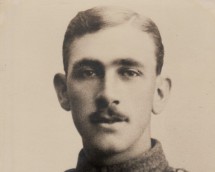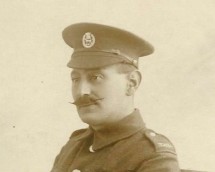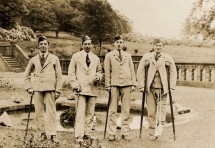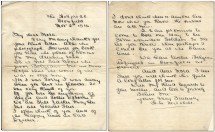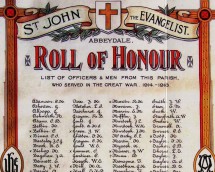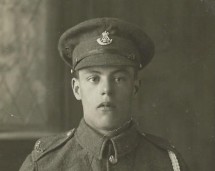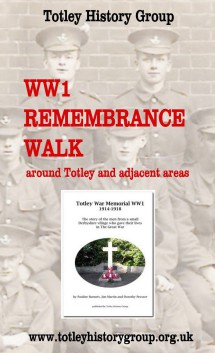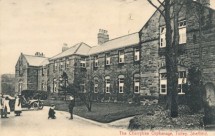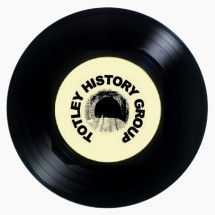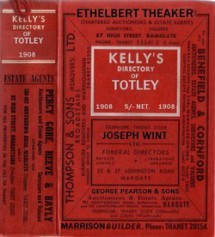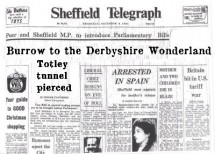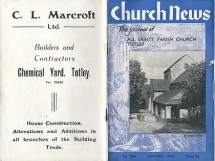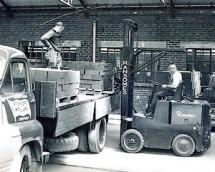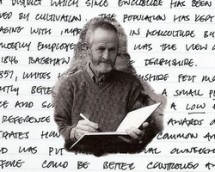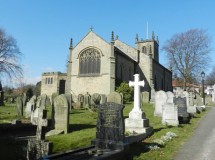Newspaper Archive: 1920s
Thursday 1st January 1920 Portsmouth Evening News (page 2)
The Sheffield Amateur Sports Club, Limited, at their annual meeting yesterday, launched a gigantic new scheme, involving an increase of capital from £3,000 to £25,000. It
was stated that the directors had purchased Abbeydale Park of 25 acres, at Dore, as a permanent sporting ground, for £4,500. This will be the headquarters of local cricket, hockey,
Association and Rugby football clubs.
Monday 23rd February 1920 Sheffield Daily Telegraph
Froggat Edge Mystery. How it was solved by Jack Slack, of Dore.
A remarkable funeral.
The death of Jack Slack, as he was familiarly known in and around the Dore neighbourhood, has removed a well-known figure from this district of Derbyshire. He was a sort of all-round handyman - the
man who got in coals, cleaned the windows, assisted the keepers and farmers of the district, and did any odd jobs.
Years ago, it was stated. Slack was crossed in love, and from that date he has not done any regular work. Well educated, and coming from a well-known local family, he was always courteous, and he was loved by the children, with whom he was fond of chatting; always bowed with great ceremony to the ladies and to the gentry of the neighbourhood, he was most polite. But Jack had no fixed home, and for many years he frequently slept in a hayloft, and it was while there he met with an accident that ended in his death.
He was buried on Saturday in Dore Churchyard, and the people of Dore saw to it that he had a decent interment. The Rev. W. R. Gibson (Vicar of Dore) conducted the service, and the attendance at the funeral was such that might have been expected at the interment of a country squire. Hundreds of people were present in the pretty little churchyard at Dore; they came from all over the countryside to pay their last tribute of respect to a man who, in spite of his singular mode of life, was a great favourite among the people for miles around.
The Vicar in a short address referred to the respect with which Jack Slack was regarded which, he said, was accounted for by the fact that he had so cheerful a disposition, was always willing to assist those who applied to him for help, and for the courtesy and regard he had always shown to others. Though he was satisfied to lead a life (of) apparent discomfort and loneliness, this did not sour his nature against those who fared better than he did. He suffered more than they could tell. He was a man with a fellow feeling and had a regard for the feelings of others. In spite of the conditions under which he lived he was a true sample of "Nature's gentleman".
Slack was well-known throughout the moorland district of Northern and Mid-Derbyshire. He tramped miles across the sheep paths, helped the keepers in the game season, and hundreds of Sheffielders met him at various times on his wanderings, accompanied only by his dog.
Many years ago there was a great sensation in this part of Derbyshire. A local resident went out on to the moors, and was caught in a terrible snowstorm - one of the worst that has ever been experienced in the Peak district. Search was made, but no trace of the missing man could be found, and to this day the tragedy is referred to as the "Froggatt Edge" mystery. But the mystery was solved. Jack Slack was doing one of his tramps across the moors. He had his dog with him, and the faithful hound, running in front of him, made a discovery and commenced to bark. Slack moved forward to ascertain the cause, and there in a hollow he found the skeleton of the man who months before had been overcome by the great storm and had fallen down and died far away from human habitation.
Monday 28th April 1920 Sheffield Daily Telegraph (page 4)
The Hallamshire Rifles Totley yesterday marched to the Totley Rifle Range where an open air service was conducted by the Rev. G.W.Turner.
Saturday 31st July 1920 Sheffield Daily Telegraph (page 5)
Platelayer's Death.
Bradway Man knocked down in Dore Tunnel
The circumstances attending the fatality in the Midland Railway tunnel at Dore, on the 29th instant, in which a platelayer, William Faxon [Walter Faxon]
(38), of Bradway, lost his life, were inquired into by Mr. M. S. Brodhurst, Deputy Coroner, at Totley station last evening. Mr. Ernest Clegg watched the case for the relatives and the National Union
of Railwayman. Mr. O. Abmey, District Controller, appeared for the Midland Railway Company. Josiah John William Faxton [Faxon], 16, Wentworth Road, Penistone, identified the body as that of his
brother. He had been a platelayer on the Midland Railway for 12 years, and was perfectly healthy and possessed good hearing. Witness had never heard deceased suggest doing anything harmful to
himself. Colin Prince, Greenoak, Totley, said he had been foreman platelayer in Totley Tunnel 27 years. The deceased had worked under him 11 years, always in the tunnel. The gang started work at
7.30, and finished at 5 o'clock. He, personally, watched for trains and was always on the lookout. On the day in question they were employed on the up line from Manchester to Sheffield. Th atmosphere
in the tunnel was very thick, and they did not start work on this account, but were waiting for the air to clear. Witness heard the train approaching and blew his whistle as a warning when it was
about 200 yards away. The deceased was standing next to witness. When the train had passed he missed the deceased, and on searching found him in the six foot way quite dead. He had no idea why he was
in the six foot way. He had no right to be there. Wilfred Salter, another platelayer, who was working with the gang, said he had had 14 years' experience of the work. He heard the ganger's whistle,
and he replied to it, the call being carried on by the rest of the platelayers. Although it was his duty to do so, Faxon did not whistle. Deceased was always a very careful man. The driver of the
train in question deposed to blowing the engine whistle on approaching the tunnel, and five times while the train was in the tunnel. He was travelling at about 25 miles and hour. Questioned by the
Coroner, witness stated that the air in the tunnel was very thick. He did not see the platelayers, but noticed the naphtha flares as he passed. The jury returned a verdict of "Death from
misadventure."
Wednesday 8th December 1920 Sheffield Evening Telegraph (page 7)
Totley's Concert Troupe of Dots and Tots
A concert was given at Killamarsh, in aid of the Mission Room Fund, by the Totley Rise Dots and Tots troupe of pierrots. There was a large and appreciative audience, and a varied programme was
excellently rendered. The artists were Miss Muriel Gummer, Miss Lorna Skill, Miss Muriel Dyson, and Messrs Gilbert Smith, F. Chambers, J. Kay, and Mr Hill as accompanist.The scenery was painted by
the Rector, the Rev. J. S. Powell, and the refreshments were provided by Miss Powell.
Wednesday 22nd December 1920 The Sheffield Daily Independent (page 6)
The World of Sport
£20,000 For Amateur Sport in Sheffield
By "The Scout"
The Sheffield Amateur Sports Club has raised practically £20,000 for its scheme of playing fields at Dore. This is a wonderful tribute to Sheffield's love for amateur
sport. No other city in any part of the country has done anything like this. In the South, where critics are only too often out of touch with Northern sport, we occasionally hear moans about the grip
professional sport has in Lancashire and Yorkshire and adjacent counties, and the lack of the vitality of amateur sport. There is plenty of vitality about the amateurs of Sheffield, where there are
many hundred good amateur clubs connected with all classes of sport. The Dore scheme, however is unique., and speaks volumes for the enterprise of the four of our amateur clubs - the Sheffield
Association F.C. (the oldest football club in the world), the Collegiate Cricket Club, the Sheffield Rugby club, and the Sheffield Hockey club.
The Dore Scheme.
The exact sum raised for the scheme at Dore is £19,872 by 476 shareholders, but another £2,000 has been promised. The club has 35 acres at Dore, together with Abbeydale Hall, which possesses
possibilities of being made into a handsome club house. Work in laying out the various grounds has been going along steadily. The cricket wicket is finished and will be in use next May. The hockey
pitch has been completed, while rapid progress is being made with the Association ground. Time will be given them to set, and no games are being played on the specially constructed grounds. A formal
business meeting of the club has been called for 30 December, at the Royal Victoria Hotel, but another meeting will be held in January, when full information will be given as to the progress and
development of the scheme. It may be at that meeting a decision will become to as to the use of Abbeydale Hall. Mr. R. R. Greaves is the secretary and the directors are Messrs. H. B. Willey, H. A.
Potts, E. C. Benson (Sheffield Association Football Club), Messrs. C. R. Wilson, Harold Willey, B. W. Doncaster (Collegiate Cricket Club), Messrs. J. T. Shepley, W. L. Gray, O. E. H. Leslie
(Sheffield Rugby Club), Messrs A. I. Gainsford, F. L. Price, and R. Hargreaves (Sheffield Hockey Club), and Messrs. R. G. Blake, C. A. Longbottom, and G. S. Marple (general shareholders).
New Club Rooms
Arrangements have now been concluded whereby Abbeydale Hall will be available as a club house for the members of the sports club. The hall will be fitted up for club rooms, refreshment and entertainment rooms, and a billiard table will be available at all times. The general public will be catered for. In addition, during the summer season a tea tent will be placed so as to be available for those playing cricket and tennis, and deck chairs will be provided, this making the place more attractive than it was last season. The hall will be open early in May. With the object of getting tennis started on the grounds a club has been formed, called the Abbeydale Park Tennis Club, which will start with half a dozen courts on the top half of the hockey ground. This, however, is only a temporary arrangement, and it is ultimately intended to level the area between the hockey ground and the Association football ground. It has been suggested that a great deal of the rough work of levelling this area might be done voluntarily by members of the club, and for this purpose levels have been taken and necessary implements will be available for anyone who would like to help in a practical manner. it is hoped to get the rough work of the levelling done before the autumn when (if funds are available)a proper drainage system can be put in and the ground turfed so as to be available for the following summer. There is to be a general meeting of all those interested in tennis next Wednesday, at 6 p.m. at Messrs J. J. Greaves' Salerooms, Aldine Court, at which it is hoped there will be a large attendance. There is plenty of room for courts, and the situation is such that in time an important tennis club may be created which with the facilities afforded by the club house, could run successful tournaments.
A Success At Totley
There was a large attendance on Saturday at the Manse bazaar held in connection with Dore and Totley Union Church. Mrs. Plumbe, (one of the Sunday School Superintendents) performed the opening ceremony, assisted by a group of pretty children. A general statement by Mr. G. Bates (treasurer), showed that the sum of £238 had been raised during the first two days. Mr. A. Stanley Pye-Smith, B.A., who presided, warned the members of the Church not to allow their enthusiasm to wane when the bazaar had come to an end. In these days, it was necessary for all to put their shoulders to the wheel and work hard. Mr. Pye-Smith mentioned that claims for assistance in the purchase of ministers' residences were now very numerous, so that the Union Church was in the fashion. Mrs. Plumbe said it was only fitting they should do all in their power to relieve their minister of any care and anxiety. The Church was both a "live" and a "family" church. Mrs Plumbe received a number of gifts from the children. A vote of thanks was proposed by Mrs. H.M. Hartley, and seconded by Mr. T.W. Todd, and Mr. Smith Jackson spoke in support. A pleasing concert was arranged by Mr. A. Liller. The artists were Miss W. Hearnshaw (soprano), Mr. Ebor Clayton (tenor), Miss Doris Green (violinist), Miss Georgina Evans, L.R.A.M. (pianist), and Mr. Gerald Bradbury (entertainer).
County Cricket.
Yorkshire's Revenge.
Leicestershire Suffer Innings Defeat.
Sheffield. Tuesday.
... The Leicestershire players, I may add, have been staying as the Lancashire men did last Whitsuntide, at Abbeydale Hall, the delightful headquarters of the Sheffield Amateur Sports Club, situate amid sylvan surroundings four miles from Sheffield's centre...
Monday 28th August 1922 Evening Telegraph (page 6)
Misfortunes Never Come Singly
Circus performers, clowns, and others have their own pet superstitions and one of these is that accidents always happen in the rule of threes. Dr. H.G.Grable used to travel all over the world with Barnum and Baileys famous circus. Here are his views on this curious belief in the rule of threes. I never had much faith in the rule of threes, which is the bugbear of circus performers, but during my four years with the show I have seen some inexplicable cases of triple accidents " said Dr. Grable." Last year we had a burlesque on the balloon horse Jupiter he cannot go with us because the horse and apparatus together are too heavy for the tent poles. Three clowns went up instead. One evening one of the tree broke his arm. For the next performance it required all the persuasive powers of the management to induce another clown to take the place of the injured one. Finally they succeeded in getting one and for several weeks the act flourished as before. Then again a clown was brought into my hospital car, and he had a broken arm. The act was a simple one and apparently without any danger whatever attached to it but a superstitious fear seized the clowns and it was impossible to persuade them to continue with it. Strange enough before the season ended the third clown who had been associated with the first two in the balloon act also suffered a broken arm, but he did not break it in that act.
Friday 13th October 1922 The Sheffield Daily Independent (page 8)
Canada's National Game.
How Lacrosse is Developing in Sheffield [Extract]
Since the start of the game in Sheffield last year two clubs have been formed - the Sheffield University Lacrosse Club (men) and the Sheffield Lacrosse Club.
Both play at Abbeydale Park, Sheffield, Amateur Sports Club ground, Dore. Mr. W.O. Townsend, Surrey street, is the honorary secretary of the latter club and Mr. I. H. Strachan,
Applied Science Department, The University, the hon. secretary of the former.
Monday 11th December 1922 Sheffield Daily Independent (page 7)
A Happy Evening
Totley Club's Dinner and Prize Distribution
The members of the Cross Scythes (Totley) Bowling Club spent a happy evening last Saturday at headquarters on the occasion of their first annual dinner and prize
distribution since their re-formation. In the absence of the President (Mr. Westerman). Mr. F.G. Dakin, M.B.E., presided over an excellent gathering, and was supported by Messrs. H. Crowther, F.
Stone, J. Wint, G. Wait, and A. Shaw (secretary). The rose bowl competition winners were presented with their prizes by the chairman in the following order. 1. H. Green; 2. H. Crowther; 3. T.
Thompson; 4. G.T. Evans; 5. A Shaw; 6. G.W. Wells; 7. W. Kaberry. A capital musical programme was provided by Messrs. Machin, Marsh, Fletcher and Harrison.
Saturday 17th February 1923 The Derbyshire Times (page 6)
To the Overseers of the Poor of the Township of Totley;
To The Chief Constable of the County of Derby;
To the Superintendent of the Police of the District; and
To T. A. Howes-Smith, Esquire, the Clerk of the Licensing Justices of the Division of Eckington.
Take Notice that I, Phoebe Jukes, of Abbeydale Hall, Totley, near Sheffield, intend to apply to the Licensing Justices for the Division of Eckington
sitting at General Annual Licensing Meeting to be holden at the Court House, Renishaw, in and for the Petty Sessional Division of Eckington on the 5th day of February 1923 or at some adjournment
thereof for a Justices' License for Billiards at a house situate and being known as Abbeydale Hall, Totley, near Sheffield, in the occupation of Joseph Kendrick, and me, the above named Phoebe Jukes,
carrying on business there as "Kendrick & Jukes." The Owners of the said premises are The Sheffield Amateur Sports Club, Limited. Given under my hand this 2nd day of February, 1923.
(signed) Phoebe Jukes.
Tuesday 20th March 1923 The Sheffield Daily Independent (page 6)
Church's Loss
Death of Mr. Samuel Swift, Sheffield
Sheffield has lost an ardent church worker and a tradesman of the old type by the death of Mr. Samuel Swift, who for 61 years was with the firm of Messrs. Thomas Porter
and Sons, provision merchants, of King street, Sheffield. He had been at work on Saturday, and when with his only surviving brother, Mr. James Swift, 21, Montgomery road, Nether Edge, as late as 9.15
on Saturday night, he appeared to be quite well, but died suddenly on Sunday from heart failure. His home was at Grove road, Totley Rise, and he leaves one son and two daughters. His wife died about
four years ago. He was born at Aldam Mills, near Barnsley, and came to Sheffield when he was thirteen years old, to start as an apprentice with Messrs. Thomas Porter and Sons. On the death of the two
sons of the founder of the firm, about thirty years ago, he became co-partner along with the two Messrs. Slagg, and had been actively associated with the business ever since. He was one of the first
churchwardens at St. Peter's Church, Abbeydale, when that church was built, and at one time was a sidesman at Ecclesall Church. He had also done a vast amount of work in connection with other
churches in the parish.
Wednesday 21 March 1923, The Sheffield Daily Independent (page 4)
Funeral of Mr. S. Swift
Last Tributes to a Well Known Business Man.
A large and representative gathering attended the funeral at Dore Parish Church yesterday afternoon, of the late Mr. Samuel Smith, who died very suddenly on Sunday last
at his residence, Sunnyvale, Totley Rise. The principal mourners were: Mr. Charles Swift (son), the misses Emmie and Linnie Swift (daughters), Mr. Frank Swift (grandson), Mrs. Charles Swift
(daughter-in-law), Mr. James Swift (brother), Miss Swift (sister), Mr. and Mrs. James Marshall, Mrs. Smith (Beauchief), Mr. and Mrs. J. Ellison, Mr. Frank Ellis, Mr. Alec. Slag, Mr. Frank Slag, and
Mr Robert B. Grayson (Solicitor). About 35 members of the staff of Messrs Thomas Porter and Sons, King street, Sheffield, of which firm Mr. Swift was the senior partner, were also present. The
service was conducted by the Rev. W.R. Gibson, Vicar of Dore. The late Mr. Swift had been with Messrs. Thomas Porter and Sons for more than 40 years and was well known and respected in business
circles in the city. He was formerly warden of the Church of St. Peter;s, Abbeydale, and had until quite recently, been a regular attender at Christ Church, Dore. He leaves a son and two daughters.
The funeral arrangements were in the hands of Mr. Harry Green, Totley Rise.
Wednesday 16 May 1923 The Sheffield Daily Independent (page 5)
Mr. Samuel Swift, Sunny Vale, Grove road, Totley Rise, for 60 years connected with the firm of Thomas Porter and Sons, left £4,915 (net personalty £3,414).
Saturday 23 February 1924 Sheffield Daily Telegraph (page 10)
Dickens' Production At Totley
An excellent performance of Dickens' "Cricket on the Hearth" was given last evening in the Dore and Totley Union Church Institute by members of the Guild and Literary Society. The parts were taken by
Miss P.M. Seed, Miss M. Hartley, Miss H.M. Plumbe, Miss E. Unwin, Miss C.M. Whitehead, Mr. H.W. Todd, Mr. A. Walkland, the Rev. J. Wesley Green and Mr. E.D. Nicholls, and were sustained in a way
which made the performance very enjoyable. A short comedy sketch, "Spring Cleaning," was also given. There was a large and appreciative audience over which Mrs. Plumbe presided. The proceeds were in
aid of church funds.
Friday 3 July 1925 Sheffield Daily Telegraph (page 5)
Dore Missionary Effort
Under the auspices of the Primitive Methodist Women's Missionary Federation a largely attended drawing-room meeting was held, yesterday, at the Dore Church. In the
absence of Mrs. Plumbe, of the Unity Church, Totley, Mrs. Baxter presided, with Mrs. Bell as vice-president. Mrs. Vine gave a review of the missionary work of the churches, and solos were finely
rendered by Miss Evelyn Daniels. Miss Fretwell accompanied. Elocutionary items were contributed by Miss Davies Leadbeater, and Mrs. Frost. Mrs. Gordon and the Rev. J.T. Goodacre also took part in the
proceedings. Tea was given by Mrs. Marriott, and a collection for the African Missions realised £5 13s. 6d.
Thursday 14 January 1926 Sheffield Daily Telegraph
Interesting Portrait.
Sheffield Centenarian For Cutlers' Company
Mr. George Wainwright
The collection of portraits which the Cutlers' Company possesses has been enriched by the presentation to the Company, by Mr. W.C. Mitchell-Withers, of a portrait of Mr.
George Wainwright, a Freeman of the Company, who lived to the great age of 107, and who died about the year 1821. Interest in the picture is increased rather than diminished by the meagre details
available respecting the life and achievements of Mr. Wainwright. The occasion which led to the painting of the portrait was the celebration of the jubilee of George III, in Sheffield. On this
occasion 71 old men, none of whom was under the age of His Majesty, who would then be 72, were entertained to dinner at the Cutlers' Hall by the Cutlers' Company, and each man received gifts of a hat
and coat. Among those who received the gifts was George Wainwright, of Whitely Wood, who was then 96 years of age.
One can but conjecture that it was the great respect in which Mr. Wainwright was held, coupled with his great age, which induced a number of Sheffielders of that day to guarantee the cost of painting the portrait for the purpose of presenting it to the Cutlers' Company. Mr. Robert Brightmore was the master Cutler at the time.
Little is known of the man himself, except that he was a native of Dore, and that he was at one time in the employ of the grandfather of Samuel Mitchell, who at one time owned the picture. The portrait was to have been paid for by subscription, and presented to the Cutlers' Company. So many of the guarantors, however, died before the picture was completed that instead of being paid for by subscription, it was bought by Robert Brightmore for the sum of 200 guineas. It afterwards came into the hands of Mr. Samuel Mitchell, of The Mount, a nephew of Mr. Brightmore, and through him it descended to Mr. W.C. Mitchell-Withers. Thus, nearly a century after it was painted, the picture will fulfil its original purpose of gracing the hall of the Cutlers' Company.
The Picture and the Artist
The work is a good example of the type of portrait painting in vogue at the time of its execution, writes our art critic, and depicts the venerable old figure of the sitter clad in a brass-buttoned
coat and holding a stick in one hand and a soft hat in the other. The features are clearly and faithfully recorded in the style of painting which aimed at full detail, and its technical success as a
painting executed in such a manner is fully apparent. Apart from the portrait of Mr. Wainwright the background possesses its note of interest for Sheffield antiquarians, for the artist has made use
of the device of introducing an open window through which a distant view of what is assuredly Sheffield is seen. It is the Sheffield of the days when green fields and trees were adjacent to the
city's landmarks, the spire of St. Peter's, and what is probably the dome of St. Paul's, being plainly visible.
The picture was painted by Charles Henry Schwanfelder, who was born in Leeds in 1773, and who occasionally practiced the art of portrait painting though his chief pursuit was the painting of animals and landscape subjects. He enjoyed considerable reputation as a Court painter in the time of George III., being appointed animal painter to His Majesty, and at a later date to the Prince Regent. The artist died in 1837.
Friday 15 January 1926 Sheffield Daily Telegraph
Mr. George Wainwright
The Newest Portrait at the Cutlers' Hall
Bit of Local History
Great interest has been taken in the announcement, which appeared exclusively in our columns yesterday, that the portrait of Mr. George Wainwright, a native of Dore, has
been given to the Cutlers' Company by Mr. W.C. Mitchell Withers and is to be hung in the Cutlers' Hall, Sheffield. By the kindness of Mr. R.L. Foxon, Accountant, "Telegraph" Buildings, High Street,
we are able to give something more about George Wainwright. Mr. Foxon has loaned to us the Rev. James Everett's book "Historical Sketches of Wesleyan Methodism in Sheffield and its Vicinity," and in
this appears the following about Mr. Wainwright.
"Totley, a village about five miles from Sheffield, had received visits from preachers. Preaching was at first out of doors, generally under a sycamore tree; but it was not long before George Wainwright took in the preachers, and permitted them to preach in his house. He bore with patience the taunts of the rude, the reproofs of his friends, and the still heavier hand of the outrageous mob. Never could he be induced to turn the Methodists out of doors. Preaching was in the village a considerable time before a society could be formed. Sarah Green, one of the first members, had a clod of earth thrown at the side of her face; and turning her head round, she received another. "There," said she, without being either grieved or afraid, "you have taken me on both sides." Few places for the size had greater disturbances in them than Totley. The people were determindly opposed to everything in the form of religion; which reflects the greater honour on the man who opened his door for the truth.
"George was born on January 28th, 1714, at Bamforth, about two miles from Hathersage, in Derbyshire. He there learned the trade of weaving, and then removed to Dronfield in 1739, where he lived til 1743. From thence he removed to Totley, and was married in 1744. There he spent a great part of his life; and his next remove was to Whitely Wood, where he met in class as long as he was able to attend. While at this place the following paragraph appeared in 'The Iris' of April 25, 1805: 'We are informed that there is now living at Whitely Wood, near this town, a man called George Wainwright in the 100th year of his age. He is a weaver and works at his trade, is stout and hearty, and can walk faster than most young men, he is not short of breath, but (according to our correspondent) is likely to live as long again as he has done.'"
"The correspondent of 'The Iris' must either have been incorrectly informed of his age, or George must have died at the great age of 115, instead of 107. On his residence at Dore during the latter part of his life, he became infirm, and through his non-attendance his name, unfortunately, was omitted in the class-paper, which should have continued till the end.
The Jubilee of George the Third
"At the Jubilee of George III, 50 old men were selected out of the town and neighbourhood of Sheffield, whose separate ages exceeded that of His Majesty's. To these, coats and hats were given. George
Wainwright was one of them, and, in the language of a friend, 'was king of them all' in point of age. A subscription was proposed to be entered into for the purpose of having his likeness taken, in
order to be placed in the Cutlers' Hall. A full length portrait was accordingly taken by Schwansfelder; but the subscriptions not having been paid in, the painting remains in the possession of Mr.
Mitchell, of Broad Lane. It was customary for some gentlemen during the last years of his life to provide a repast for himself and his descendants, on the anniversary of his birthday, as a tribute of
respect to his age and character. The following is a hymn sung on th e last annual festival and composed for them occasion by John Holland, author of 'Sheffield Park' etc.
Before the flood, five hundred years,
Protracted oft' the light of man.
Now, frail threescore and ten appears
A very hand-breadth and a span.
Lord, still Thou sparest this heir of heaven.
In patriarch age, to dwell on earth,
Surviving fivescore years and seven,
Departed since the pilgrim's birth.
Thousands, born on his natal day,
Who first with him beheld the sun,
Have smiled, and wept, and pass'd away-
Their earthly joys and sufferings done.
"One thing which tended to awe the people in Totley was the sudden death of a young man who, a little before his exit, had been very active as a persecutor in pulling the preacher from his stand, and offering other acts of violence. It was perfectly unnecessary for serious characters to view it as a judgement; the wicked themselves viewed it as such, and their own comment was not without its salutary effect."
Everett (who wrote the book from which we quoted, visited Wainwright at Dore (where he had retired) on April 11th, 1821. He found the old man sitting amongst his descendants, "like a connecting link between the living and the dead; a being in whom the light of existence has already been partially obscured the the encroaching shadows of death." During this visit Everett made a pencil drawing of Wainwright, at the same time adding materially to his stock of information relative to early Methodism in these parts. Four days later this venerable worthy passed away, aged 107.
Monday 25th October 1926 The Sheffield Daily Independent (page 9)
Totley Bowls Club Dinner
Friendly Fixtures Only Played by Members.
Successful Year.
The Totley (Cross Scythes) Bowling Club is one of the few clubs who play nothing but friendly fixtures. During the past season they have played home and away fixtures
with Chatsworth, Baslow, Brincliffe, Wadsley Social Club, and the Post Office bowling teams and won each encounter upon the aggregate scores. Over 70 members met together, on Saturday, at the Cross
Scythes Hotel on the occasion of the annual dinner and prize distribution. Mr. J.W. Turner (president) presided, supported by Messrs. F.G. Dakin, W. Plant, W.S. Hall (treasurer), F. Oakes
(secretary). Mr. Dakin in proposing the toast of the "Totley Bowling Club," mentioned that efforts were being made to make the green for next season in a condition fit to compare with the best in the
district. They could claim to be the most successful club whose activities were confined to the playing of friendly matches. Messrs. F. Oakes and W. Hyland had only lost one match during the
past two seasons. During the evening a presentation of a handsome clock was made by the president to Mr. W.S. Hall, in recognition of his services as treasurer. Mr. F. Oakes' win in the annual
handicap proved most popular, for in the final with Mr. J.T. Pearson only one point decided the honours. The complete list of prizewinners were: Annual handicap: 1. F. Oakes; 2. J.T. Pearson; 3. H.
Crowther; 4. W. Kaberry; 5. W. Wise; 6. T. Wint; 7. R. St. I. Smith; 8. E. Lake. Ryedale Shield: 1. T. Chapman; 2. J. Salt. Doubles competition: 1. J.T. Pearson and E. Coleman; 2. F. Oakes and
C.L. Marcroft. Flying handicap: J.W. Turner. Holiday handicap: 1. C.L. Marcroft; 2. W. Wise; 3. H. Green; 4. J.H. Slack. A splendid musical programme was provided by Messrs. A. Dakin, H. Robinson,
Vincent Arthurs, D. Vickers and H. Jones (pianist).
Thursday 30 June 1927 Sheffield Daily Telegraph
Manor of Ecclesall
Talking of records reminds us that an old friend and antagonist of ours, who conceals his identity under the very thin disguise of "Carolus Paulus" is writing a book on "The Manor and Parish of Ecclesall." Judging from the list of contents, it promises to be of exceptional interest. The volume is to be published by subscription, and already there are over 250 subscribers - a sufficient number to indicate how great is the interest taken in the work, but not quite enough to indemnify the author against loss. The price of the book is 6s. 6d. paper, or 8s. cloth, and applications for a volume to be reserved should be sent to "Carolus Paulus", Ribbledene, Totley. We hope our readers, who are interested in the ancient records of Sheffield, will become subscribers.
Wednesday 13th July 1927 The Sheffield Daily Independent (page 3)
Amateur Sports Club
Need for Hard Court Tennis at Abbeydale Park
Reduced Overdraft
The annual meeting of the Sheffield Amateur Sports Club was held at 18, York street, the registered office, yesterday. Mr. H. B. Willey, who presided, said that with
regard to the financial position, the overdraft which a few years ago was £7,000, is now £2,345, and this is practically covered by the amount of £2,250 due under the mortgage of Abbeydale Hall. As,
however, the Sports Club was a progressive affair, further capital expenditure continued to be necessary, and during the past year certain improvements to the ground were effected, in particular the
new Bankers' hockey ground. In order to cope with the extended area of playing fields which require attention it became necessary to purchase a motor roller. This motor roller had not yet been paid
for, and was the chief item in the account of sundry creditors £527.
Tennis Club Idea
With regard to the future, there was always the question of establishing a tennis club. There was always the nucleus of a very fine tennis club, which, if hard courts could be provided, would rapidly
extend into a club of considerable dimensions which would prove a very valuable asset to the club. The increased number of subscriptions which would result from a flourishing tennis club would go a
long way towards solving the income problem. With regard to the income and expenditure account, it would be noticed that this year there is a deficit of £167, but with regard to this deficit it
should be pointed out that £100 has been allowed for depreciation and there is a further item which should also be mentioned, namely, in the accountancy charges amounting to £33 12s. There is a
special payment in this year's accounts in connection with the company's liability for Income Tax. Every economy was being effected as regards expenditure. It was, however, a great struggle for the
clubs to raise the amounts at which they were assessed, and it was therefore with very much regret that the directors were compelled to raise the assessment for the ensuing year. If, however, this
assessment was not raised, the clubs would certainly be faced with another deficit which would in time produce a serious problem.
Bank Holiday Fete
With a view to helping the funds of the club, Mr. Shepley and Mr. Edwards had been good enough to organise a fete on August Bank Holiday, and it was hoped that all members of the Sports Club and
their friends would do their very best to make this a tremendous success. Helpers were still urgently needed. Their duties were chiefly to act as showmen, and anyone willing to help should send in
their name to Mr. Shepley. If they had a fine day and the Fair was the success it deserved to be, having regard to the amount of work put in by Mr. Shepley and Mr. Edwards, and the other helpers, the
proceeds would be applied in payment for the motor roller, and the balance, if sufficient, would be utilised for the provision of hard tennis courts and generally improving the financial position.
There was no doubt that the grounds were very fully used, and each year that went by showed that the provision of these grounds for amateur sport had been very well justified. Many important matches
had already taken place, and today and tomorrow the Collegiate C.C. were having their annual match with the M.C.C. The retiring directors, viz: H. A. Potts, Col. D. S. Bransom, D.S.O., F. Ludlam, R.
Hargreaves, Wynyard Dixon and R. A. Rowley Morris were re-elected.
Saturday 22nd June 1929 Sheffield Independent (page 2)
Norton Rural District Council
Purchase of Mowing Grass, Sheep Grazing
The Norton Rural District Council is prepared to receive tenders for the grazing of sheep at the Greenoak Recreation Ground, Totley, area about 8 acres.
The Council is also prepared to receive Tenders for the purchase of the mowing grass at the Recreation Ground, the contractor to undertake all the necessary work in connection with the cutting and
removal of the grass, which must be done to the satisfaction of the Council. Tenders must be received by me not later than Monday, 1st July next. Lawrence Richmond, Clerk to the Council. Offices.
West Bar, Sheffield. 21st June, 1929.
Thursday 29th August 1929 The Sheffield Daily Independent (page 7)
Bridle-Track Disappears
Holmesfield to Dore
Housing Need
What was once a delightful old bridle track leading from Holmesfield to Dore village and Sheffield and flanked for great part by grassy, primrose-lined banks and
hedgerows, will soon disappear entirely. Until recently, part of the bridle track could be seen leading from the main Abbeydale road South and up by the side of Abbeydale Park, but housing
developments and road-widening have resulted in only a very small piece being left. This also promises to be swallowed up within the next few months. The old "high road" as it was called used to lead
down Twentywell lane, across Abbeydale road South, up Water lane on the opposite side of the road, and then curve to the left from Abbeydale Park and through what is called Ashfurlong.
Tracing the Road
The road then wound to the right again, and up what is now known as Dore road, formerly Dore New road. From here it continued down through Ryecroft Farm, across a ford in Ryecroft Glen, through the
Ecclesall Woods across Abbey lane and through the woods again until it reached to the bottom of Button Hill, Millhouses. The road then continued up Button Hill until it wound to the right, passing
eventually, across the present Carter Knowle road, until it reached a farm yard near Banner Cross Hall. It then went through the fields to the top of Brincliffe Edge, and apparently continued down
into Sheffield. The old Water lane, by the side of Abbeydale Park, has now been replaced by a road which continues round the wide bend, followed by the old bridle track until it reaches a point only
a short distance from Dore road, which runs from Dore village into the main Abbeydale road.
What Photograph Shows
Part of the portion of the original bridle track which is still left is shown in the photograph reproduced on the back page. Another part also remains intact, where the road begins to curve back from
the top of Abbeydale Park towards Dore road, but this is now being widened. Cutting across the loop of the new road at its largest point, and completing the "D" shape, is Cavendish avenue, alongside
which used to run the old footpath which was a short cut for people who wanted to miss the mud of the bridle track. Water lane was so called because no matter how dry the weather was, water could
always be found running down the side of the road.
Interesting "Cutting"
About half-way up Twentywell lane, there can still be seen a cutting in the side of the road into which carts, coming down the lane, could draw out of the way to let any, coming up, pass. The road,
of course, was only just wide enough for one cart, and it was the rule that the cart coming up should always be given the right of way. Another old bridle-track which used to run down by Totley Rise
through Bushey Wood to the bottom of the village green in Dore, has disappeared. Picture on Back Page.
Wednesday 4 September 1929 Sheffield Independent (page 4)
Blind Lover of Cricket
City Sportsman's Memories
Rare Relics
A Sheffield man who, although he has been blind for ten years, goes to every important cricket and football match at the Bramall lane ground, told a "Sheffield
Independent" representative in a chat yesterday how he "saw" the matches. He is Mr. Thomas Glossop, of Brinkburn Vale road, Totley, Sheffield, a razor manufacturer, and an amateur
horticulturist of considerable local fame. In addition he is probably the moist enthusiastic supporter Yorkshire county team, and cricket generally, have. The fact that is 76 years old and blind does
not deter him from enjoying matches to a greater extent than many people. I found Mr. Glossop in his garden with his wife, writes a "Sheffield Independent" representative. He is a little
gentle-voiced man, wearing thick spectacles. "These are my eyes," he said, placing an affectionate hand upon the shoulder of his wife. "I go will her to Bramall Lane. We always sit on the same seat,
and the people know us, for they reserve our place, and pass the time of day.
Boyhood Enthusiasm
"The scene is a blur to me, but you see, before I went blind, I went to every match of importance, and I can picture the scene in my mind. My wife tells me what is going on, who is batting and
bowling, how the fielders are placed, and what the score is. In that way I can "see" a match as well as anybody. I used to know all the county cricketers by sight, for I followed cricket closely. It
has been my hobby all my life. I was born in what was then Bright street, now Fitzwilliam street, almost within sound of the cricket bell, and when I was a small boy and I worked for my father I used
to get up at three o'clock in the morning to get my work done so that I could be on the cricket ground for the opening of play."
Mr. Glossop went on to talk of his horticultural successes when the Abbeydale Amateur Gardening Society was alive. The Society offered a cup for competition each year
to the member who gained the most points in the show, and Mr. Glossop won the cup for six years in succession. In fact, he was the only man to hold it and it is still in his possession.
Autographed Trousers
His interest in horticulture in undiminished, although he can no longer see the flowers he tends so lovingly. He took me into his house to show me some of the treasured trophies which have been given
to him by famous cricketers. There was a bat which his son, Mr. W.W. Glossop, captain of the Sugg Thursday team, uses. It was presented to Mr. Glossop by Victor Trumper, who led the victorious
Australian team of the 1905 Test Matches. There was a ball used in the Test Matches of 1909. Mr. Glossop's most valuable relic, however, is a pair of Hopkin's [Hopkins'] trousers, which in 1909 that
player found had been autographed by all the members of the Australian team in indelible ink. The names included M.A. Noble, Macartney, Roger Hartigan, Warren Bardsley, B. Ferguson, Frank Lather
[Laver] and others. Of course Hopkins could not wear the trousers, and gave them to Mr. Glossop in exchange for a "safety razor." Mr. Glossop had made the razor so "safe" that Hopkins could not open
it, and decided to have an ordinary razor instead. The joke, related by Mr. Glossop, is still talked of in Australia. At night Mr. Glossop finds solace in the wireless. He listens to the news
bulletin, and hears all the cricket results.
"That is my salvation," he told me. "I love the wireless, for it places me on the same level as others. I spend hours listening."
Saturday 7 December 1929 Sheffield Daily Telegraph (page 6)
Totley Rise, Near Sheffield.
With Excellent Bus and Train Services from and to the City of Shefield.
A Small Freehold Estate
Containing a total of a bout 14 acres, having extensive road frontages to the main road from Sheffield to Baslow, to Mickley Lane, and to Glover Road, which intersects the Property. To be Offered For
Sale as a Whole, or if not sold, in the following Four Lots:-
LOT 1. -With Vacant Possession. The brickbuilt Dwelling-House, Outbuildings, Yard and Garden, situated at the corner of Mickley Land and Glover Road, at present unoccupied. Area about 32 perches. For
Key to View, apply to Mr. T.E. Bailey, Brook Terrace, adjoining the Lot.
LOT 2. -The Close of Excellent Accommodation Grass Land, containing about 1 acres 2½ roods, with a frontage to Glover Road of about 280 feet. Tenant, Mr. James Gledhill. Apportioned rent £4 0s.
0d.
LOT 3. -A Similar Close of Land containing about 2 acres 1½ roods, with a frontage to Glover Road of about 370 feet. Tenant, Mr. James Gledhill. Apportioned rent, £6 0s. 0d.
LOT 4. -With Vacant Possession, The Triangular Piece of Land containing about 10 acres and possessing exceptional road frontages to the main road from Sheffield to Baslow of about 2,040 feet, to
Mickley Lane of about 1,160 feet, and to Glover Road of about 610 feet. All Free of Tithe and Land Tax.
Ernest S. Mitchell will offer the Property for Sale by Auction on Monday, December 16th, 1929, at 6 o'clock p.m., at the Cross Scythes Hotel, Totley, subject to the
General Conditions of Sale of 1925 and to such Special Conditions as shall be read.
For Printed Particulars and Plan apply to Mr G. F. Barnes, F.S.I., Chartered Surveyor, Bank Chambers, Central Pavement, Chesterfield; the Auctioneer, 10 Gluman Gate, Chesterfield or to Bramley and
Coombe, Solicitors, 4 and 6 Paradise Square, Sheffield.
Search Our Website Here
September
October
November
Unless stated otherwise our meetings are held in Totley Library on the 4th Wednesday of each month at 7.30pm.
Pauline Burnett's book The Rise of Totley Rise has been revised and updated. It tells the story of this small piece of land from 1875 when there was only a rolling mill and chemical yard alongside the river a mile from Totley, through Victorian and Edwardian times, two world wars and up to the present day. It has 94 pages including a useful index and many illustrations from private collections. The book is available now from Totley Rise Post Office priced at £5, or through our website when an additional charge will be made to cover packing and postage.
A few copies are still available of Sally Goldsmith's book Thirteen Acres: John Ruskin and the Totley Communists. Totley was the site of a utopian scheme funded by art critic and social reformer John Ruskin. In 1877 he bought 13-acre St. George’s Farm so that nine Sheffield working men and their families could work the land and, to keep themselves busy, make boots and shoes. Sally tells an engaging story from our history with a quirky cast of characters including Ruskin himself, the poet and gay rights activist Edward Carpenter and Henry Swan, a cycling, vegetarian artist and Quaker. The book is available to order online from the The Guild of St. George by following this link.
A recently discovered box of WWII correspondence reveals the story of how a small group of ladies from Dore and Totley recruited knitters from the west of Sheffield and how their efforts made them the country's greatest provider of Comforts for the Minesweeping crews of the Royal Navy. The story is told in Knit For Victory, a new book from Totley History Group. Written by Pauline Burnett, it has 82 pages and many illustrations. It is on sale in local shops and via our website. Further information about the correspondence is in this inside page of our website: Dore & Totley Minesweeping Trawlers Comforts Fund.
The story is told in Totley War Memorial WW1 of the ten men from our village who gave their lives in the Great War. Written by Pauline Burnett, Jim Martin and Dorothy Prosser, a chapter is devoted to each of the soldiers with a family tree followed by as much information as could be discovered about the men and their families. There is also information about their military careers and the actions in which they lost their lives. The book has 64 pages and is illustrated throughout with photographs of the men, their families and the houses where they lived.
Totley All Saints' Church Parish Magazines for the years 1985-2006 with notices of baptisms, marriages and funerals and accounts of spiritual, educational, charitable and social matters in the village. Scanned in full, including advertisements from local traders.
In 1893 during the building of the Totley Tunnel there was an outbreak of smallpox amongst the navvies which spread to some of the local population. 17 people were buried in communal graves in Dore Churchyard, 6 from "Green Oak" (Lemont Road). The severity of the outbreak was principally caused by overcrowding and insanitary conditions in lodging houses .
Kathleen Grayson was a 39 year old housewife when WW2 broke out. She volunteered for the ARP and became an ambulance driver. During an air raid on Sheffield in July 1941, and despite her own injuries, she managed to get a seriously injured casualty to hospital. For this she was awarded a commendation from King George VI. Together with her friend Hilda Duffy, Kathleen also assembled a team of knitters to provide essential warm clothing for the men serving on the minesweepers patrolling the North Sea.
We have recently bought at auction the WW2 memorabilia of Douglas Platts whose family home was at Hillside, 98 Queen Victoria Road. After the war Douglas returned to his civilian occupation working in the family scissors manufacturing business. He lived in our area for the rest of his life.
We are very grateful to Mrs Valerie Taylor of Dore for lending us the title deeds to Lower Bents Farmhouse which is reputed to be the oldest surviving building in the area with a proven history back to 1621. We have now scanned and transcribed the deeds which could be particularly interesting to anyone with a connection to the local Fisher, Dalton and Marshall Families.
Until 1844, when Dore Christ Church parish was created, Totley township was part of Dronfield parish. We have now transcribed the burial records for former Totley residents at St. John the Baptist, Dronfield for the period 1678-1870 and at St. Swithin, Holmesfield for the period 1766-1901.
Whilst researching the history of the Dalton Family we found it useful to transcribe a number of early Wills and Inventories. These and those of many other Totley, Dore and Holmesfield people dating from between 1594 and 1856 have now been added to our website.
St. Swithin's Church, Holmesfield pre-dates Dore Christ Church and was the place where many of the people from Totley worshipped and were baptised, married and buried. Read the inscriptions on more than 750 gravestones in the churchyard including those of Mr. and Mrs. William Aldam Milner of Totley Hall, Jessie Matilda Tyzack (nee Fisher) of Avenue Farm, and Rev. J. A. Kerfoot of St. John's, Abbeydale.
Thomas Youdan was a music hall proprietor and benefactor who was living at Grove House, Totley in 1867 when he sponsored the first football knockout competition in the world for The Youdan Cup.
The words Millhouses Cricket Club can be seen in the background of team photos which are likely to date from between 1905 and the early 1920s, very probably pre-war. They were lent to us by Garth Inman who can identify his great uncle, Cecil Inman, in some of the photos and would like to know when they were taken and, if possible, the names of others present. Please take a look to see whether you can put names to any of the faces.
Josiah Hibberd was seriously injured whilst working on the construction of the Totley Tunnel in 1892. He died on 9 May 1897 at the age of 38 having apparently spent most of previous five years in hospital.
Bradway House was built around 1832 by Henry Greaves, a farmer, together with two adjacent cottages. We have traced most of the occupants of the property from these early days up to the start of World War Two.
We have transcribed the baptisms records at St. John the Evangelist, Abbeydale from when the church was consecrated in 1876 until just after the start of World War 1. The records are arranged in alphabetical order based upon the child's name and show the date of baptism, the names of the parents, their home location and occupation.
Nick Kuhn bought an original 1920s poster which had this owners' blind stamp in one corner. The stamp almost certainly refers to a house named Wigmore that was built in the late 1920s or early 1930s. The first occupiers that we can trace are John Howarth Caine, a district mineral agent for the LNER, his wife Florence Jane (nee Prince) and daughter Doris Mary. The Caine family lived at Wigmore until 1936 by which time the house would have been known simply as 12 The Quandrant.
George Griffiths died on 13 December 1888 following an explosion during the sinking of number 3 airshaft at Totley Bents. His widow Florence died shortly afterwards and his two daughters Maud and Annie were adopted separately. Whilst Annie lived the rest of her life in Yorkshire, Maud emigrated to Australia in 1923 with her husband, John Burrows, daughter Margaret and son Jack, pictured above.
George Wainwright was said to have been born in Bamford, Derbyshire in 1714. He learned the trade of linen weaving and moved to Totley after his marriage on 1744. He became an ardent follower of John Wesley who paid many visits to Sheffield and who would have passed through or close to Totley. Preaching was at first conducted out of doors and when Wesley's preachers became harassed by a mob of Totley ruffians in 1760, George offered them safety of his own home. He remained a Methodist for all of his long life, dying in Dore in 1821 at the reputed age of 107.
Oakwood School was started by Mrs Phoebe Holroyd in 1925 initially as the Firth Park Kindergarten and, by 1927, as the Firth Park Preparatory School. Phoebe was still working at the school almost fifty years later when she was well into her seventies. We would like to hear from anyone with memories of the school.
James Curtis was born at sea aboard HMS Chichester in 1790. He enlisted as a Private in the 1st Grenadier Regiment of Foot Guards in Sheffield in 1812 and served in Spain and Portugal during the Peninsular War. He later fought in France and Belgium taking part in the Battle of Waterloo. In later life James lived at the Cricket Inn where his son-in-law William Anthony was the licensed victualler. He died in Heeley in 1882 aged about 91.
Charles Paul lived in Totley in later life. He was a local historian and archaeologist who was an authority on the history of Sheffield, especially the two areas he knew best: Attercliffe and Ecclesall. His books and letters to local newspapers were published under the Latin form of his name Carolus Paulus.
Towards the end of the 19th century Totley Hall gardens became a well known beauty spot that attracted many hundreds of visitors from Sheffield on open days and the rock gardens became one of its most popular features. Mrs Annie Charlesworth sent us six glass transparencies of the rock gardens taken, we believe, in the early years following the Great War.
Anton Rodgers send us photographs of three water-colours that had been bought by his grandfather at a sale of the contents of Abbeydale Hall in 1919. One was of a scene said to be in York by A. Wilson. A second was of a seated child with a dog believed to be pianted by Juliana Russell (1841-1898). The third was of Lake Como, by Ainslie Hodson Bean (1851-1918) who lived for much of his life on the Riviera and in North Italy.
A Canadian correspondent sent us photographs of a set of silver spoons that were bought in a small town in British Columbia. The case contained a note signed by Ebenezer Hall indicating that they were a wedding gift to Maurice and Fanny Housley. We think we may have traced how they got to Canada and where they might have been since.
Green Oak Park was opened on 23 March 1929 on land that had been bought by Norton District Council from John Thomas Carr, a farmer and smallholder of Mona Villas. In later years, the buildings were used by the Bowling Club (the green having been built in 1956) and by the park keeper. However, the buildings appear to have been constructed in several phases, the oldest of which predates the park to the time when the land was used for pasture.
We believe the old Totley Police Station at 331 Baslow Road was built around 1882. Two lock-up cells were excavated just below floor level in the summer of 1890. We have traced the Derbyshire Constabulary police officers who lived there from John Burford in 1886 to George Thomas Wood who was there when Totley was absorbed into Sheffield in 1934.
David Stanley lived in Totley Rise in the later years of his life. Born in Bulwell, Nottinghamshire, he joined the 17th Lancers when he was 19 and rode in the Charge of The Light Brigade at the Battle of Balaclava where he was seriously wounded. For the first reunion of veterans in 1875, he told his story to a reporter from the Buxton Herald.
This picture postcard was addressed to Miss Abell, Holly Dene, Totley Brook Road and posted in Rotherham on 10 December 1907. Edith Annie Abell was born on 4 February 1887 in Sheffield and her family came to live in our area in the 1900s, staying for the rest of their lives.
Charles Herbert Nunn enlisted in the British Army on 23 August 1915 and was sent to France on 18 December 1915 to served with the British Expeditionary Force. In March 1916 it was discovered that he was underage and he was returned home. Shortly after his 18th birthday he re-enlisted and was again posted abroad where, in addition to this trio of medals, he was awarded the Military Medal.
This certificate was awarded jointly by the Red Cross and St. John's Ambulance to Isaac Henry Williams, of Lemont Road, for his services during WW1 as a stretcher bearer. We are seeking anyone who can help us pass it on to a living relative.
In 1832 Samuel Dean pleaded guilty to stealing a quantity of lead from the Totley Rolling Mill and was sentenced to seven years transportation to Australia. He sailed on the Mangles and upon arrival in New South Wales he was sent to work for William Cox, the famous English explorer and pioneer. After receiving his Certificate of Freedom in 1840, Samuel became a farmer and went on to have a very large family. Samuel was born in Whitechapel around 1811 to parents Samuel Dean Snr. and Susannah Duck. His descendant Sarah Dean would like help in tracing his ancestry.
Ellen Topham was born in 1889 in Nottingham. Her parents had been living together since 1862 but had never married so it was most unusual that, after their deaths, Ellen was accepted into Cherrytree Orphanage. Even more so since her father, Snowden Topham, had been acquitted somewhat unexpectedly in a widely reported manslaughter trial. Ellen remained at Cherrytree until her death from pulmonary tuberculosis at the age of 15.
Mabel Wilkes was a resident in Cherrytree Orphanage between 1897 and 1905. Her granddaughter Sally Knights sent us these images of a book presented to Mabel as a prize for her writing. Sally also sent us some personal memories of her grandmother and a photograph of a locket which contains portraits of Mabel and her husband Septimus Gale.
John Henry Manby Keighley was living at Avenue Farm when he enlisted in 1916. He fought in France with the Cheshire Regiment but after home leave in early 1918 he went missing. The Army were unable to determine whether he had deserted or returned to the front and been either killed or captured by the enemy. In August 1919 he was formally presumed killed in action but it appears he did not die but returned home to his family.
Horace Ford was admitted to Cherrytree Orphanage on 26 October 1888 at the age of six. He left at the age of 14 to become an apprentice blacksmith and farrier. Soon after his 18th birthday Horace enlisted in the Imperial Yeomanry to serve his country in the war in South Africa. His letter home to his Orphanage mentor tells of the lucky escape he had in battle.
Pat Skidmore (née Sampy) lived on Totley Brook Road from 1932 to 1948 before her family moved to Main Avenue. In this short article she remembers her time at Totley All Saints School where she was a contemporary of Eric Renshaw and Bob Carr.
As we have nowhere to exhibit memorabilia and artifacts, we have created a Virtual Museum instead. The latest addition to our collection is this double-sided Totley Rise Post Office oval illuminated sign which was on the wall of 67 Baslow Road before the Post Office business transferred to number 71. Please contact us by email if you have things that you own and would like to see added to the virtual museum.
Conway Plumbe was a man of many talents who came to live in Totley Rise around 1912. As a young man he had poems published by Punch magazine and is remembered in modern collections of WW1 poetry. A number of his paintings were accepted by the Royal Academy. An engineering graduate of London University, he joined the Civil Service where he rose to a high level as a factory inspector, publishing two books on the subject and giving a series of talks on workplace health and safety on BBC radio during WW2. In retirement he wrote a philosophical-spiritual work called Release From Time.
Inside Totley Rise Methodist Church there is a Roll of Honour commemorating the soldiers from its congregation who served their king and country during the Great War. For all but one of the 28 names the soldier's regiment is recorded in the next column. The exception is David Cockshott for whom 'killed in action' is written alongside yet he appears on no war memorial in our area and no record of a mortally wounded soldier of that name is to be found. We think we have solved the mystery.
Mrs. Kate Plumbe moved from Mansfield to Totley Rise with a number of her family in 1913 and became closely involved with the Totley Union Church. Her daughter Winifred became a missionary and headmistress in Calcutta for over 38 years following which she returned home to live with her sister Hilda on Furniss Avenue. Hilda had also been a teacher, missionary and, like her mother, a volunteer at St. John's VAD during WW1.
Thomas Glossop was a cutler and razor manufacturer who was well known amongst cricketing and gardening circles. Despite going blind, he was able to continue his hobbies with remarkable success
The Totley Union Cycling Society Prize Giving and Fete was held on the fields near Abbeydale Hall on 18 July 1914. Anne Rafferty and Gordon Wainwright have named some of the people in two wonderful photographs of the event. Can you identify any more for us?
The Tyzack family are well known in our area for owning iron and steel trades at Walk Mill, Abbeydale Works, Totley Rolling Mill and Totley Forge. This article covers the history of the family from the late 18th century when William Tyzack the founder of the company was born until the early 20th century when Joshua Tyzack farmed at Avenue Farm, Dore.
Walter Waller Marrison moved to Totley around 1897 with his wife and their two young sons. He was a house builder who constructed properties around Totley Brook and Greenoak before ill health forced him to take up less physically demanding work. In 1904 he took over the tenancy of the grocers and off licence at number 71 Baslow Road. After his death in 1908, his widow Kate and later their eldest son Jack continued to run the business until it was sold in 1934.
Ron Wijk of Nieuw-Vennep in the Netherlands has sent us two scanned images of drawings of old cottages made by the celebrated Dutch painter, Anton Pieck (1895-1987) simply annotated "Totley", and wondered whether we could identify their locations.
We would like to thank Christopher Rodgers for bringing to our attention this fascinating log of the 85th Sheffield (St. John's and Totley Orphanage) Wolf Cub Pack for 1927-45. The log is published jointly by Sheffield Scout Archives and Totley History Group as a free PDF download. It is illustrated by no fewer than 92 photographs and is supported by a comprehensive index and biographies of some of the main participants.
Following our Open Meeting event on School Days, Roger Hart, Howard Adams and John Timperley have each written to us with their memories of Norwood School, which was located in the rooms attached to the Dore & Totley United Reformed Church on Totley Brook Road.
On 22nd July 1909 the children of Dore and Totley Schools celebrated by a pageant the union of England under King Ecgbert which took place at Dore in AD 827. The pageant was devised and written by Mrs Sarah Milner and her daughter Marjorie and performed in a field close to Avenue Farm in front of a large audience. Photographs of the event survive together with a fragment of the script.
John Edward Greenwood Pinder had lived all 46 years of his life in Totley but on census night, Sunday 2 April 1911, he was not at home; he was in Derby Gaol serving a sentence of three months hard labour. From the age of 20, John had been in and out of local courts for a series of minor offences including drunkenness, assault, wilful damage and night poaching. Finally he was sent to gaol for cutting down and stealing 86 small trees which he sold in Sheffield market for Christmas.
We have already transcribed the census returns for Totley, Totley Rise and Dore. Now we have transcribed Census Strays. These are people who were born in Totley but are missing from our earlier transcriptions. They may have been living, working or studying elsewhere or just away from home on the night the census was taken. Two people were in prison. Others were in Union Workhouses, hospitals and asylums. Fully indexed strays from the 1851, 1861, 1881, 1891, 1901 and 1911 censuses are available now.
We wish to thank Gillian Walker for allowing us to digitize an archive of material about the 1st Totley Scout Group. Most of the material was collected by Arthur Percival Birley in the period 1949-51 and there are many interesting documents pertaining to the building of the scout hut on Totley Hall Lane. In addition four Newsletters survive, two from the 1940s and two from 1971.
We are grateful to Angela Waite and All Saints' Parish Church for giving us access to baptismal and kindergarten birthday rolls dating from 1926 to 1941. We have transcribed the names, addresses, birthdates and baptismal dates and created an alphabetical index of entries for you to search.
Edmund Sanderson, a Sheffield estate agent, aquired the land on either side of the old drive to Totley Grove in 1874 and divided it into plots for development. He called it the Totley Brook Estate. But before many houses were built, the estate road was severed in two by the building of the Dore & Chinley Railway line. The eastern end of the road became the cul-de-sac we now call Grove Road.
John Roberts was born in Sheffield in 1798. He became a partner in one of the leading silversmiths firms in the city before moving to Abbeydale Park in 1851 and extending the house in Victorian gothic style. He paid for the building of St. John's Church and was believed to dispense more in charity than any other person in the neighbourhood including his protege Ebenezer Hall.
The Coke Family owned the Totley Hall Estate from 1791 to 1881. With the aid of a family tree to guide us, Josie Dunsmore takes us through the story of their tenure.
When the Rev. D'Ewes Coke inherited the Totley Hall Estate in 1791 it had two farms. Josie Dunsmore tells the story of how the two farms were combined under the tenancy of Peter Flint with the aid of field maps drawn by Flint himself and later by the Fairbanks family.
Do you think you recognize this face? More than sixty photographs of the girls and teachers at Hurlfield Grammar School for Girls in the 1940s were given to Totley History Group by Avril Critchley, who was herself a student at the school. The collection includes fifteen form photographs from June 1949. There would have been a number of girls from the Totley area attending the school in those days.
Christine Weaving tells the story of her 2 x great uncle George Edward Hukin, a Totley razor-grinder, and his life-long friendship with the academic, poet, writer, and free-thinker Edward Carpenter.
Eric Renshaw (pictured here on the right with Bob Carr) grew up and lived in Totley from 1932 to 1960. Many of his memories are of a sporting nature.
We are very grateful to Gordon Grayson for giving us this splendid sale document for the Norton Hall Estates, following the death in 1850 of Samuel Shore. The estates included a large part of Totley and the document has maps and illustrations, plus schedules of land and property with the names of tenants. We have also added a transcription of the entries for Totley and Dore.
Watch this Youtube video of the talk given by Dr. Mark Frost and Sally Goldsmith on Ruskin, Totley and St. George's Farm. The talk was hosted by Totley History Group on 20th May 2015 as part of the Ruskin in Sheffield programme. Also enjoy a video of the outdoor performance Boots, Fresh Air & Ginger Beer written by Sally.
When Jacqueline A. Gibbons became interested in what made her father tick, it began a journey through WW1 archive records and led to her flying from Toronto to visit the house and village where he lived and the countryside that he so much enjoyed. Jacqueline reminds us that in the early 20th century Sheffield was a driving force of industry and that Totley was the place where many of its remarkable people lived and where they formulated their ideas.
Edgar Wood was the designer of The Dingle, 172 Prospect Road, built in 1904 for Rev. William Blackshaw, the founder of the Croft House Settlement. The house, together with its western terrace and boundary walls, has now been awarded Grade II listed building status.
What was probably "the most perfect little garden railway in existence" in 1910 was to be found in the grounds of Brook House, Grove Road, the home of its designer and constructor, Guy Mitchell. Look at some wonderful photographs and read reports in newspapers and a full appreciation in Model Railways magazine.
We have now completed our transcription of Totley School's Admission Records for the period from 1877 to 1914. There is also a useful index to the names of the scholars and to their parents or guardians. We are very grateful to Sheffield Archives and Local Studies Library for allowing us to transcribe and publish these records and for permission to reproduce the photograph of a specimen page of the register.
On 8, 9 and 11 November 2014 Totley History Group held an exhibition at Dore & Totley United Reformed Church to commemorate the centenary of the First World War. Below are additional links to some of the photographs we were lent and stories we researched especially for the exhibition.
Oscar Creswick was a local farmer who served with the Army Service Corps in Salonika and who after the war returned to Totley to become the innkeeper of the Cricket Inn and a member of the village's successful tug of war team.
Walter Evans was a market gardener who also ran a small grocery shop on Hillfoot Road when war broke out. He fought with the Machine Gun Corps at the fourth battle of Ypres. After the war, Walter ran a grocers shop at the top of Main Avenue.
Fred Cartwright was another Totley soldier who survived the Great War. He fought in France and Belgium and although he wasn't wounded he was gassed and was home on sick leave when his daughter was delivered by Nurse Jessop during a snowstorm in January 1917.
Maurice Johnson joined the Yorkshire Dragoons, a territorial unit, on 1 Jan 1914 and so was called up at the very start of the war. He fought throughout the war on the Somme, at Ypres and at Cambrai. After demobilization in 1919 Maurice returned to his old occupation in the steel industry.
Bill Glossop lent us a letter written by his father, William Walton Glossop to his wife describing life in the army during training in the north east of England and asking her to keep him in mind with the children.
The photo above provides a link to an album of photographs taken of WW1 Hospitals at St. John's, Abbeydale and the Longshaw Estate.
Nora Green, of Chapel Lane, was only 14 when war broke out. In 1914 she was ill with diphtheria and was sent to the isolation hospital at Holmley Lane, Dronfield. Nora recovered and wrote a letter of thanks to one of the hospital staff and the reply she received survives.
We have collected together on this page the names of local men who appear on various War Memorials and Rolls of Honour in Totley, Dore, Abbeydale, Norton, Holmesfield and Dronfield.
Unfortunately we were unable to identify all the photographs we were lent of Totley Soldiers. Please take a look at this album to see if you recognize any of the missing names.
This walk visits locations that have strong associations with Totley during the First World War. It includes the homes of the ten soldiers from the village who lost their lives, the auxiliary hospitals, war memorials, and even the rifle range on which the soldiers trained. Take a look at the first draft of a new walk by the authors of "Totley War Memorial WW1 1914-1918"
We wish to thank the Trustees of Cherrytree for giving us permission to publish transcriptions of the Cherrytree Orphanage Admissions Book entries for the years 1866-1929. There is also an alphabetical index for you to look at.
With more people having access to faster broadband and mobile networks, we have uploaded seven full and unedited oral history recordings and also added more short excerpts for you to listen to.
Our transcriptions of local trade directories have been expanded to cover the 95 years from 1837-1932 and have also been indexed. From the days when there were a handful of farmers, stone masons, saw handle makers & scythe grinders to the wonders of the Totley Bridge Garage Company, Betty's Boudoir and The Heatherfield Shopping Centre.
We continue to add to our Totley Newspaper Archive. Recent entries have included several about The Plumbe Family, Thomas Glossop and accidents during the construction of Totley Tunnel.
Totley Church of England Parish Magazines for the years 1922-1939 and 1948-1967 with notices of births, marriages and deaths and accounts of spiritual, educational, charitable and social matters in the village.
Around 90 photographs taken by Stuart Greenhoff for his thesis A Geographical Study of Dore and Totley including several of Totley Moor Brickworks. Superb!
Chronologically ordered snippets of information recorded by Brian Edwards during his many years of research into our local history.
Read the inscriptions on more than 700 gravestones in the churchyard.
Visitors since 24 Sep 2012:


